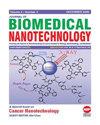Associations of Inflammation, Oxidative Stress and Prognosis with IL-37 Expression in Sepsis Rats with Lung Injury
IF 2.9
4区 医学
Q1 Medicine
引用次数: 0
Abstract
This study aimed to investigate the role of interleukin-37 (IL-37) expression in lung tissues of sepsis-induced acute lung injury (ALI) rats and its impact on ALI, along with the underlying mechanisms. Sprague-Dawley (SD) rats were categorized into three groups: Control, sepsis-induced ALI (via cecal ligation and puncture, CLP), and sepsis-induced ALI with antibiotics (CLP+An). ALI models were established, and lung tissue injuries were assessed through hematoxylineosin staining. mRNA levels of IL-1α, IL-1β, IL-37, and tumor necrosis factor-α (TNF-α) were measured via RT-PCR, while IL-37 protein levels in lung tissues were determined using Western blotting. Additionally, bronchoalveolar lavage fluid (BALF) and blood samples were collected to assess inflammatory factors through ELISA. In the CLP group, there was an increase in pro-inflammatory factors (IL-1α, IL-1β, and TNF-α) in lung tissues and serum. However, in the CLP+An group, these factors decreased, IL-37 expression increased, and oxidative stress levels decreased. IL-37 demonstrated an inhibitory effect on the release of pro-inflammatory factors (IL-1α, IL-1β, and TNF-α) in sepsis rats, leading to a reduction in lung tissue inflammation. Furthermore, IL-37 exhibited a protective role by reducing oxidative stress in sepsis-induced lung tissues. These findings highlight IL-37 as a potential therapeutic target for mitigating ALI in sepsis.脓毒症肺损伤大鼠的炎症、氧化应激和预后与 IL-37 表达的关系
本研究旨在探讨白细胞介素-37(IL-37)在脓毒症诱导的急性肺损伤(ALI)大鼠肺组织中的表达作用及其对ALI的影响和潜在机制。斯普拉格-道利(SD)大鼠分为三组:对照组、脓毒症诱导的 ALI 组(通过盲肠结扎和穿刺,CLP)和脓毒症诱导的 ALI 加抗生素组(CLP+An)。通过 RT-PCR 测定 IL-1α、IL-1β、IL-37 和肿瘤坏死因子-α(TNF-α)的 mRNA 水平,通过 Western 印迹测定肺组织中 IL-37 蛋白水平。此外,还收集了支气管肺泡灌洗液(BALF)和血液样本,通过酶联免疫吸附法评估炎症因子。在CLP组中,肺组织和血清中的促炎因子(IL-1α、IL-1β和TNF-α)有所增加。但在 CLP+An 组,这些因子减少,IL-37 表达增加,氧化应激水平降低。IL-37 对败血症大鼠促炎因子(IL-1α、IL-1β 和 TNF-α)的释放具有抑制作用,从而减轻了肺组织炎症。此外,IL-37 还能降低败血症诱导的肺组织中的氧化应激,从而起到保护作用。这些发现突出表明,IL-37 是减轻脓毒症 ALI 的潜在治疗靶点。
本文章由计算机程序翻译,如有差异,请以英文原文为准。
求助全文
约1分钟内获得全文
求助全文
来源期刊
CiteScore
4.30
自引率
17.20%
发文量
145
审稿时长
2.3 months
期刊介绍:
Information not localized

 求助内容:
求助内容: 应助结果提醒方式:
应助结果提醒方式:


